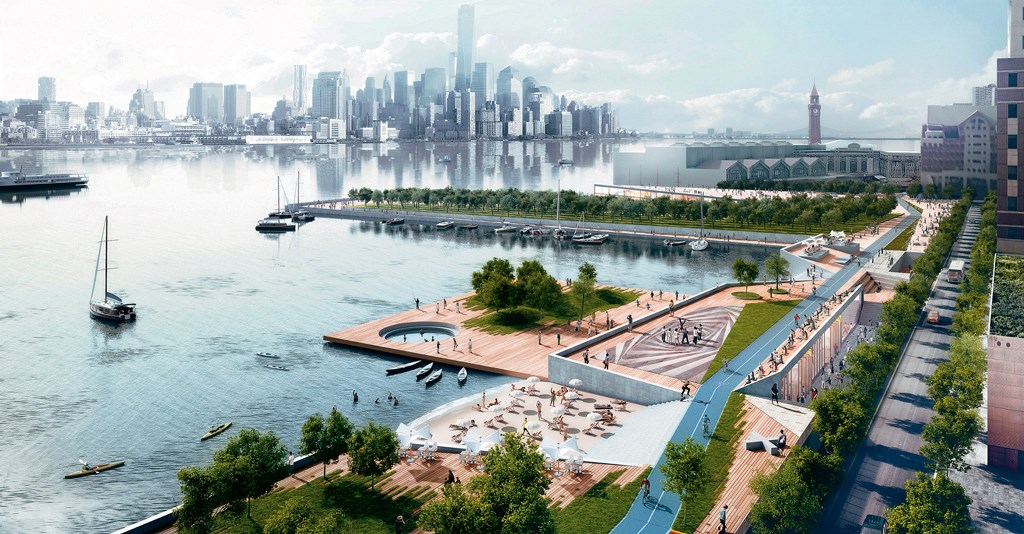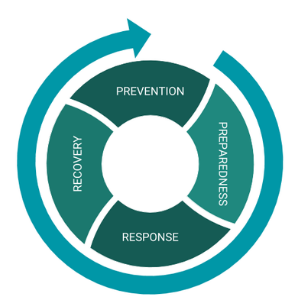Cities are always striving to incorporate innovation into their urban planning, looking to make their community as “smart” as possible. And now, with the additional challenge of climate adaptation, leaders must also focus on urban resilience.
So, how can cities ensure that their resilience and smart city solutions complement each other? Here are a few insights.
TECHNOLOGIES AREN’T THE SOLUTION
Over the years, the concept of a smart city has evolved from focusing on ICT use in the city to a more human-centric approach.
Where most cities are looking for long-term solutions, a common complaint is that they are being sold technology solutions with a short-term impact. An integrated solution with a focus on the long term is required, especially when it comes to making a city climate-resilient.
In some cases, technology is seen as the final solution, until it becomes clear that it doesn’t fully address the root of the problem. Therefore, technology should be seen as a tool for problem-solving, the means to an end, rather than the end itself.
This also means that cities don’t run the risk of becoming too dependent on big firms or technologies and lose decision-making power. That being said, smart city technologies can, of course, improve urban resilience in multiple ways.
INVOLVING SMART CITY SOLUTIONS WITH RESILIENCE
Looking at the disaster management cycle, there are four different stages: prevention, preparedness, response and recovery, and smart city technologies could play a role in each one.
In the prevention phase, risk mapping can lead to more adaptive planning. While risk maps are not new, the vast increase in the amount of data available (from various sources such as satellite images and volunteered geographical information from smartphones) certainly presents a new challenge in terms of channeling and filtering the information.
Technology enables easier citizen engagement during the prevention phase, which raises awareness and more support for resilience measures. However, how to arrange and increase citizen engagement and use citizen’s input are some of the key challenges.
To provide citizens with early warnings and to give feedback on the adaptive planning, trendwatching and forecasting are essential. Developing a resilient city therefore usually comes with an interconnected network of sensors which enables a very high-quality monitoring of threats.
Apart from the monitoring as a smart city technology, new communication services can accommodate a modern warning system. Old warning systems like local sirens are being complemented by ICT based systems like warning messages to mobile phones, possibly connected to an app that tells citizens where to go and what to do.
During and right after a natural disaster, live mapping can improve the situation assessment and decision-making by emergency services. However, good coordination and training are necessary as data doesn’t directly improve the emergency service. It’s also important to avoid over-dependence on ICT, as it the system is not infallible and might not work when either its digital or physical infrastructure is under threat.
With the help of smart city technologies, the recovery phase after an impactful event can lead to more effective rebuilding based on the concept of build back better. One of the examples is the city of Hoboken, New Jersey which was hit by Hurricane Sandy. Instead of putting things back they way they were, the mayor Dawn Zimmer decided to rebuild smarter. Together with Special Envoy for International Water Affairs Henk Ovink, a design competition called Rebuild by Design was instigated.
Teams of experts in different disciplines came up with ideas like more trees in the urban landscape, permeable sidewalks to allow water to drain, and a volunteer group that is creating a “mesh network” of linked Wi-Fi spots to serve as an emergency communication system.
CHALLENGE DRIVEN APPROACH TO IMPROVE RESILIENCE
To summarize, smart city technologies can be very helpful and add to the resilience of a city. However, there are certainly obstacles for urban planners, emergency services and all others involved to effectively use these technologies and all the data available.
One firm that’s helping cities with this challenge is Bax and Company, which has developed a challenge-driven approach to help cities to improve their resilience. They say that accelerating innovation is important to problem-solving, but that resilience—not technological development itself—should be the goal.
Featured image (courtesy of OMA) shows a resilient redevelopment concept for Hoboken, New Jersey that includes barriers, pumps and a belt of parkland to soak up water.


